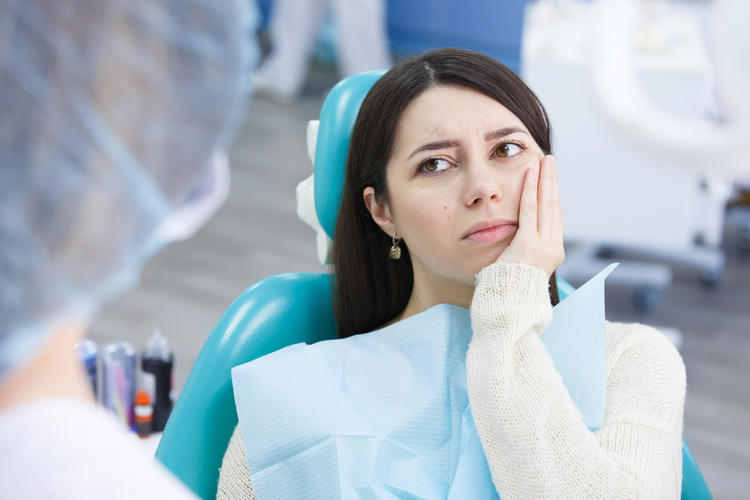Pulpitis: Symptoms, causes, and treatment
Pulpitis is the most common cause of tooth pain and tooth loss. It can be acute, chronic or show no symptoms, and can be either reversible or irreversible if it gets too severe. To treat and prevent pulpitis efficiently, let’s find out about the pulpitis, its symptoms, and causes through this article.
Overview of Pulpitis
Inside each tooth, there’s an area called the pulp which contains blood and nerves. Pulpitis is a condition that results in pain due to inflammation and can occur in one or more teeth.
The main cause of pulpitis is the invasion of bacteria into the tooth pulp that causes the pulp area and its surrounding tissues to get swollen.
There are two main forms of pulpitis: reversible and irreversible. Reversible pulpitis refers to cases where the inflammation is mild and the pulp is healthy enough to function normally. Irreversible pulpitis is when there are tooth inflammation and other symptoms such as severe pain, and the tooth pulp cannot be saved.
Irreversible pulpitis can result in a type of serious infection called a periapical abscess. This infection occurs at the tooth root where a pocket of pus will form afterward. If left untreated, the infection can spread to other body parts, such as the sinuses, jaw, and even the brain.
Pulpitis can be confused with other oral conditions, causing false positive or false negative diagnoses. These conditions include:
- Calcified tooth pulp
- Underdeveloped tooth tip, often seen in the young
- Tooth injuries
- Use of local anesthesia to reduce pulp pain
What are the symptoms of pulpitis?
Both forms of pulpitis result in pain and discomfort but the pain from reversible pulpitis can be milder and only occur during eating. The pain caused by irreversible is typically more severe, can worsen with positional body changes, and occur throughout the day and even at night.
Other symptoms of pulpitis include:
- Tooth inflammation
- Sensitivity to extremely hot or too cold foods
- Sensitivity to excessively sweet foods
- Moreover, irreversible pulpitis can include additional infection symptoms like:
- Fever
- Swollen lymph nodes
- Bad breath
- Unpleasant taste in the mouth (a bitter or metal taste)
Read more: What to do when a cavity has spread to the pulp?
When to see a dentist?
Visit your dentist if you have the following symptoms of acute pulpitis:
- Sharp pain at the affected tooth along with sensitivity, which is worsened with lying down or resting on your back
- The tooth becomes more sensitive to hot and cold stimuli
- Discoloration of the affected tooth
- Swollen gums or facial parts where the affected tooth is located

What are the causes of pulpitis?
The enamel and dentin of a normal and totally healthy tooth will protect the pulp from infection.
Pulpitis occurs when these protective layers are damaged, allowing bacteria to invade the tooth and cause swollen pulp. However, as the pulp is securely located in the root canal, when it is swollen it can put pressure on the tooth and cause pain as well as increase the likelihood of infection.
The tooth enamel and dentin can be damaged due to the following:
- Tooth decay that damages the enamel
- Injuries, like strong forces that can cause cracks, chips, or breaks in the tooth crown
- Broken teeth that reveal the pulp
- Tooth damage caused by poor habits or medical problems such as teeth grinding and crossbite, among others.
Risk factors of pulpitis
Anything that increases the risk of tooth decay - for example, lack of fluoride in the water supply where you live or diabetes – can increase the risk of pulpitis. Children and older people are also at high risk for pulpitis. However, this depends mostly on one’s oral hygiene.
Bad habits that can increase your chances of pulpitis include:
- Improper oral hygiene practices: no brushing after eating and not seeing a dentist regularly
- A diet with too much sugar or excessive consumption of foods and drinks that make a beneficial environment for the development of tooth decay such as refined carbohydrates
- Jobs and hobbies that can affect oral health such as boxing and martial arts
- Chronic teeth grinding
How is pulpitis diagnosed?
Pulpitis can usually be diagnosed by a dentist. Firstly, your dentist will examine your teeth and perform X-rays to determine the severity of tooth decay and tooth inflammation.
You may be asked to take several tests to evaluate your tooth sensitivity to foods that are hotter, colder, and sweeter than normal. The extent and duration of your response to the stimuli will help your dentist determine if it’s partial or complete pulp damage. Your dentist will also use a tool to gently tap on the tooth in question to determine the extent of pain and inflammation.
In addition, you may be given an electric pulp test to analyze how many percent of the pulp is damaged. This test directs a tiny electrical charge to the pulp and if you are still able to feel this charge, your tooth pulp damage is likely reversible. If you don’t feel anything then it’s possible that you have irreversible pulpitis.
Treatment for pulpitis
Treatment options for pulpitis vary, depending on whether the damage is reversible or not.
If you have reversible pulpitis, treating the causes will help with the symptoms. For example, if you have mild tooth decay, your dentist will help relieve your pain by removing the decayed part and cleaning the damaged tooth, then sealing it closed.
If irreversible pulpitis is the case, your dentist can perform root canal treatment to remove the damaged tooth pulp, without causing further damage to the rest of the tooth. After the procedure, the empty space inside the tooth will be cleaned and filled with filling materials. In serious cases where your tooth and its pulp is severely damaged and can’t be helped, tooth extraction is required.
After root canal treatment or tooth extraction, contact your dentist immediately if you experience any of the following symptoms
- Extreme pain
- Swelling inside and outside of the mouth
- A feeling of increased strain inside the tooth
- Recurrence of initial pulpitis symptoms
How to manage tooth pain?
You can relieve the pain before and after the treatment with pain pills and nonsteroidal anti-inflammatory drugs (NSAIDs). Also, consult your dentist about the kinds and doses of NSAIDs you are on to ensure safety. If you are to receive a root canal or tooth extraction, your dentist will prescribe a stronger pain killer.
Prevent pulpitis
Pulpitis can be prevented by frequently practicing proper hygiene and regular dental checkups. Also, avoid having sugary foods such as sodas and sweets to prevent tooth decay which can lead to pulpitis.
If you have teeth-grinding, wear a mouthguard to protect your teeth.
If you experience tooth pain or any problems in your mouth, visit your dentist as soon as possible to get timely diagnosis and treatment. Early treatment will help you prevent irreversible pulpitis and substantially increase the success rate.
Healthy, radiant teeth are what make a beautiful smile. How to best take care of your oral health? It’s recommended that you and your family should visit your dentist once every 6 months to get timely diagnosis and treatment for any oral problems.
Services
Working Time
- Monday - Friday: 08:00 - 19:00
- Saturday: 08:00 - 18:00
- Sunday closed
Contact Info
- Hotline 1: (+84) 908 321 455
- Hotline 2: (+84) 931 857 885
- Mobile: (+84) 8 3925 8778
- Phone: (+84)2 838 258 778
- info@dentalrose.net
- rosedentalclinicvn@gmail.com
 English
English  Tiếng Việt
Tiếng Việt

